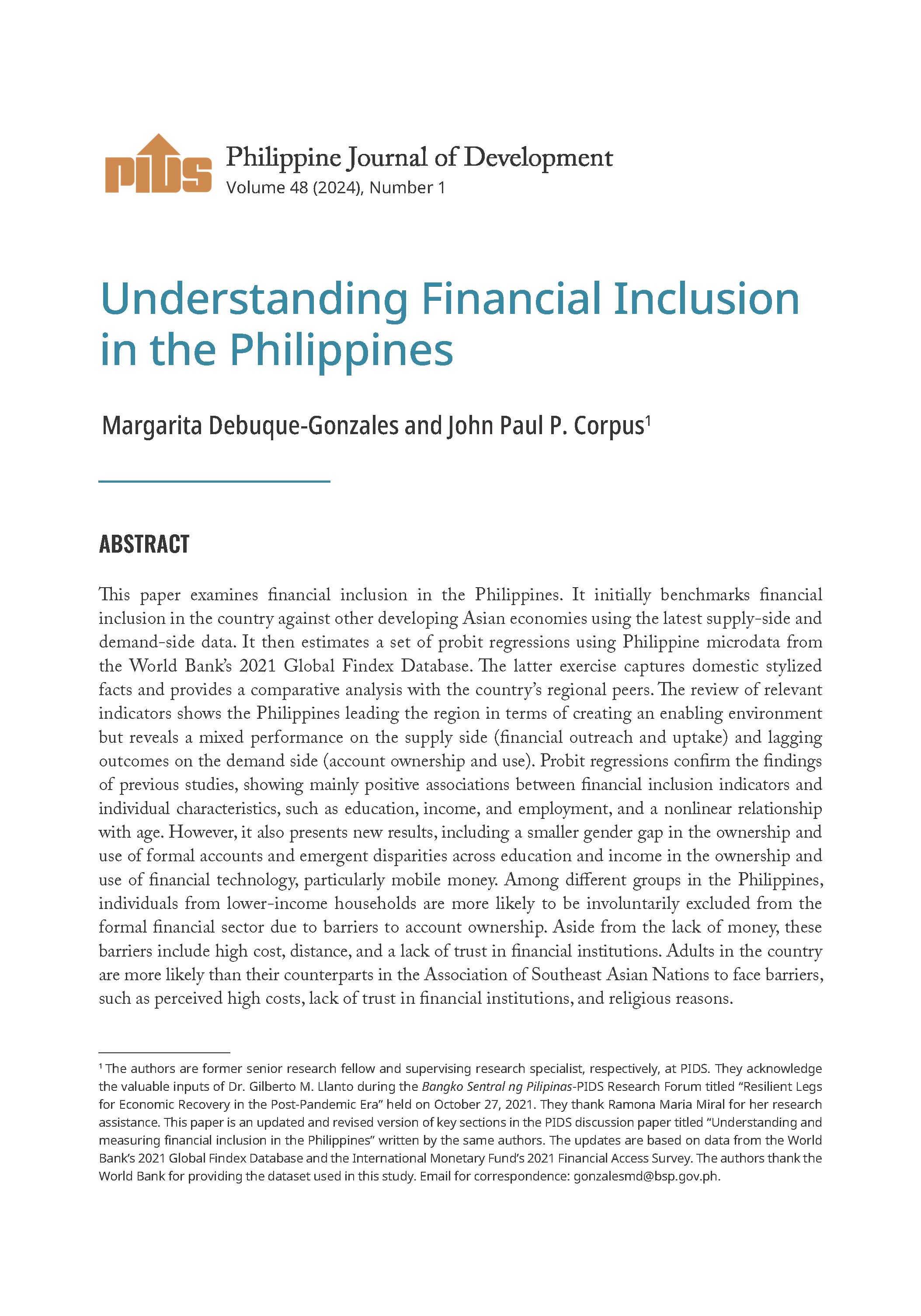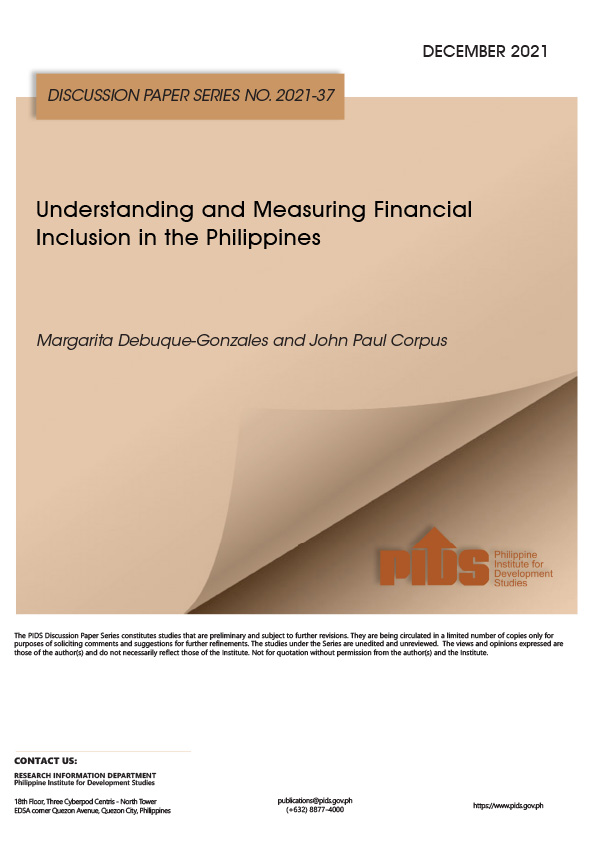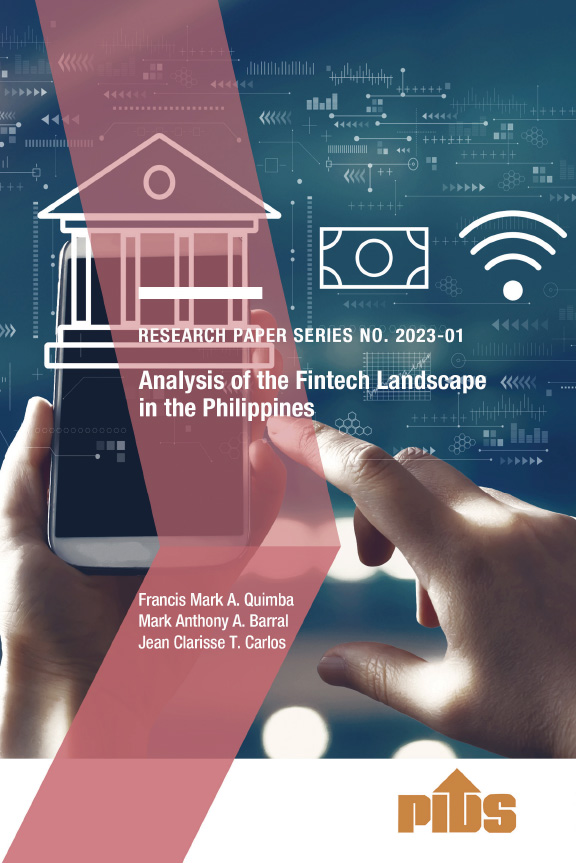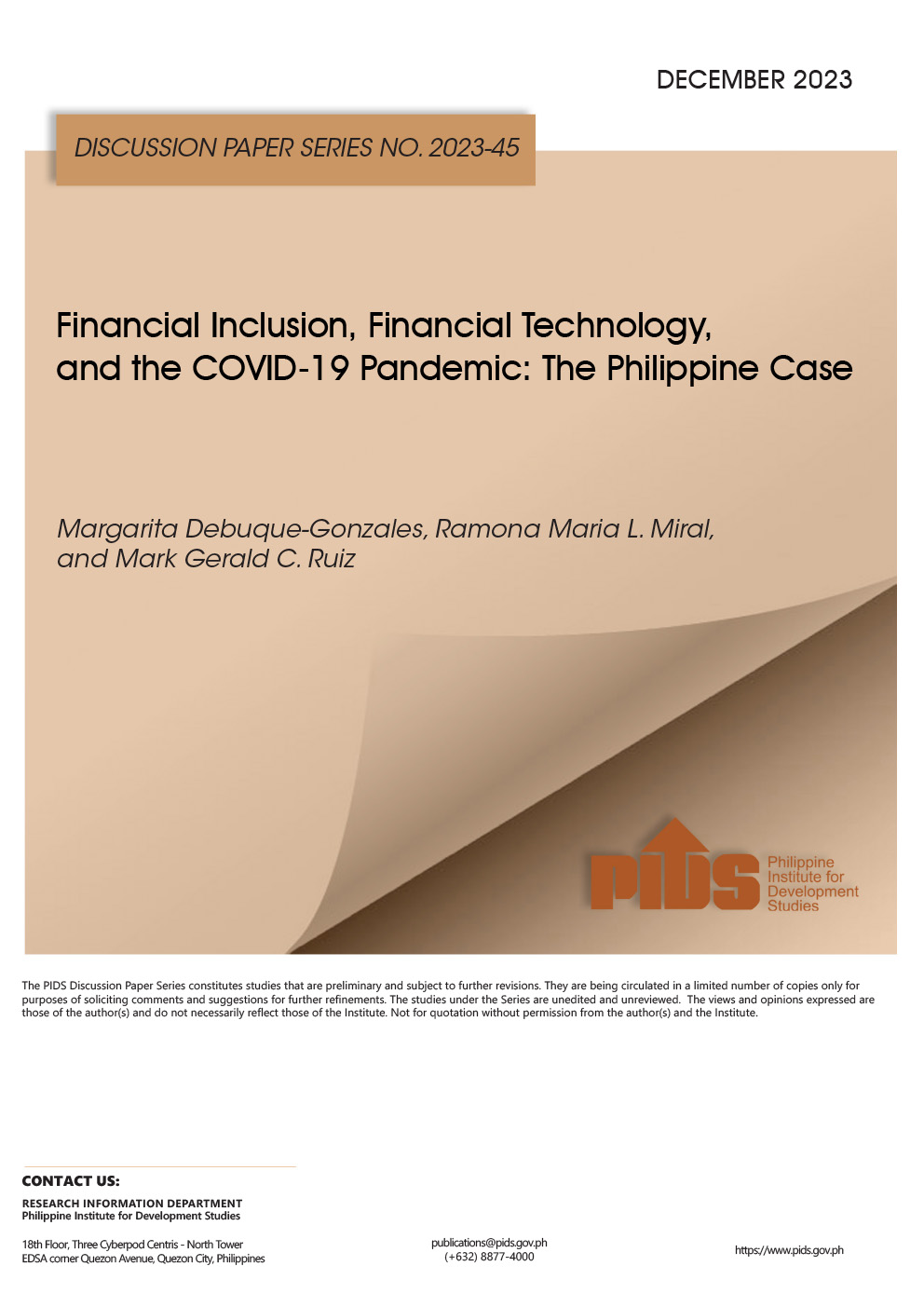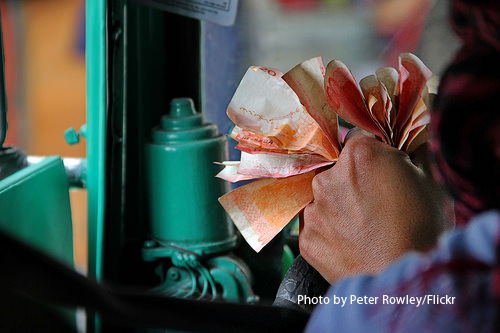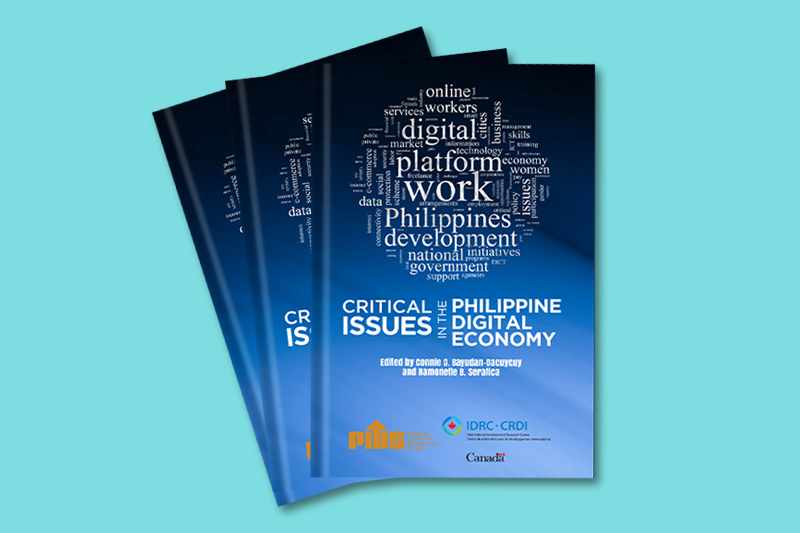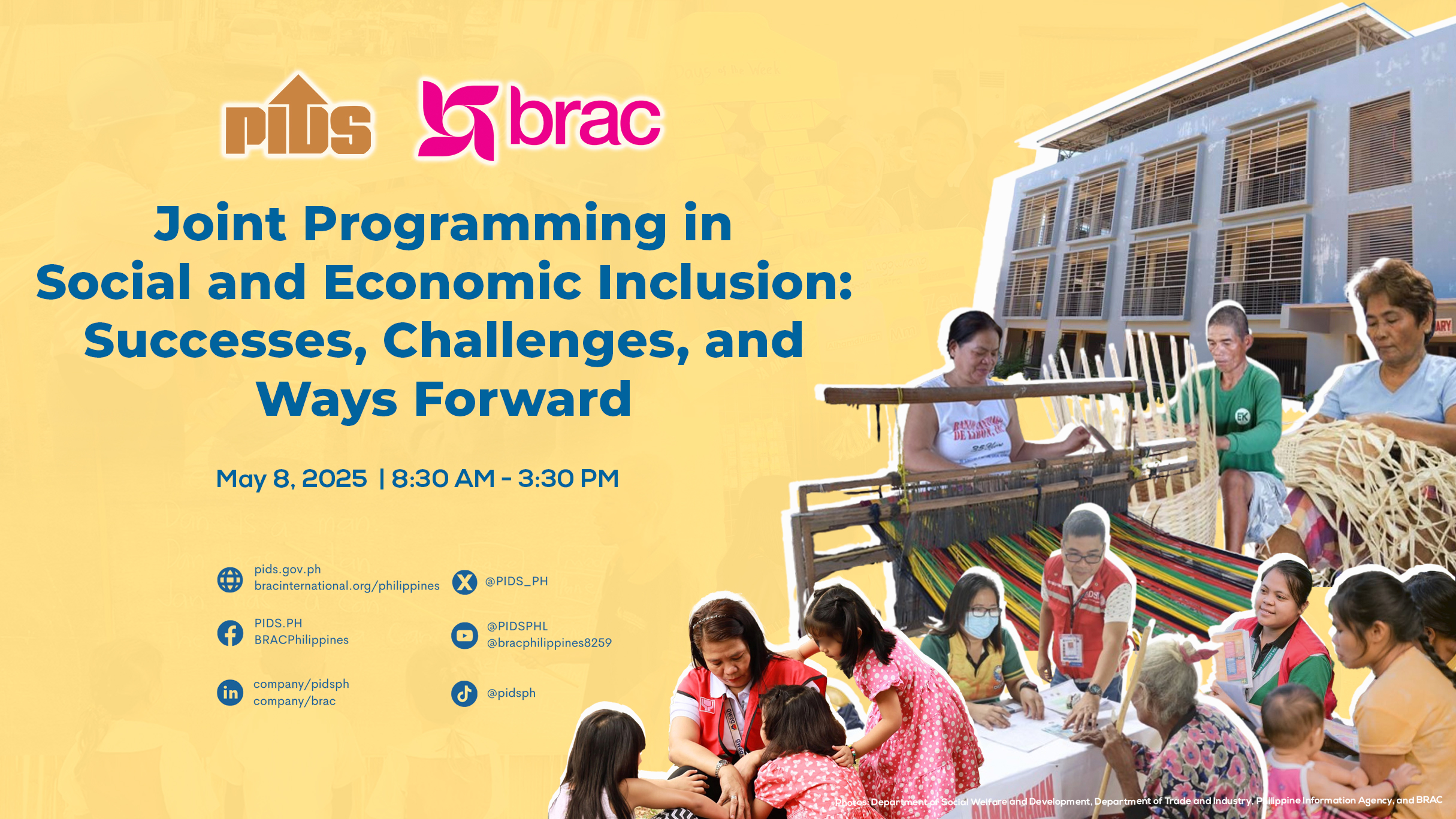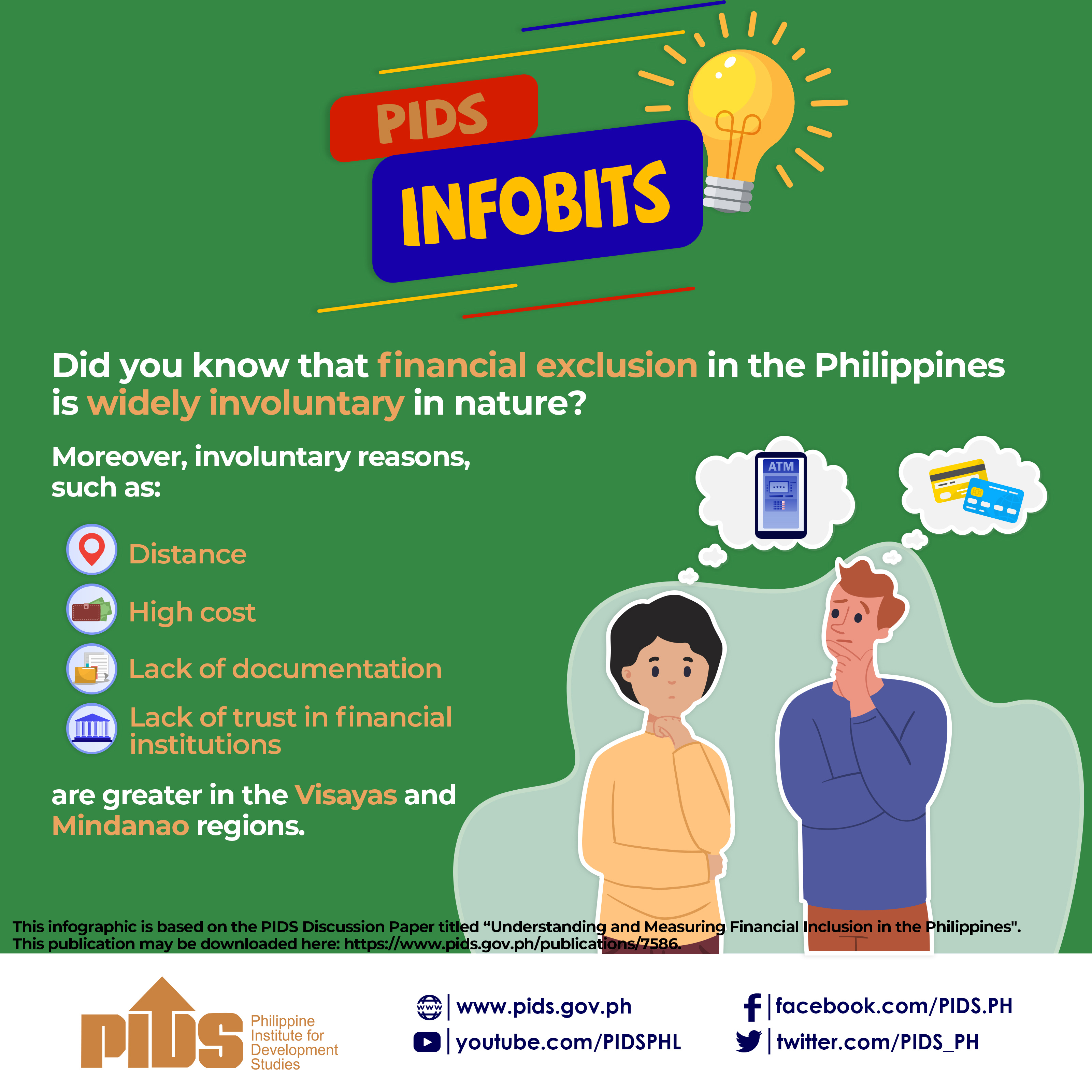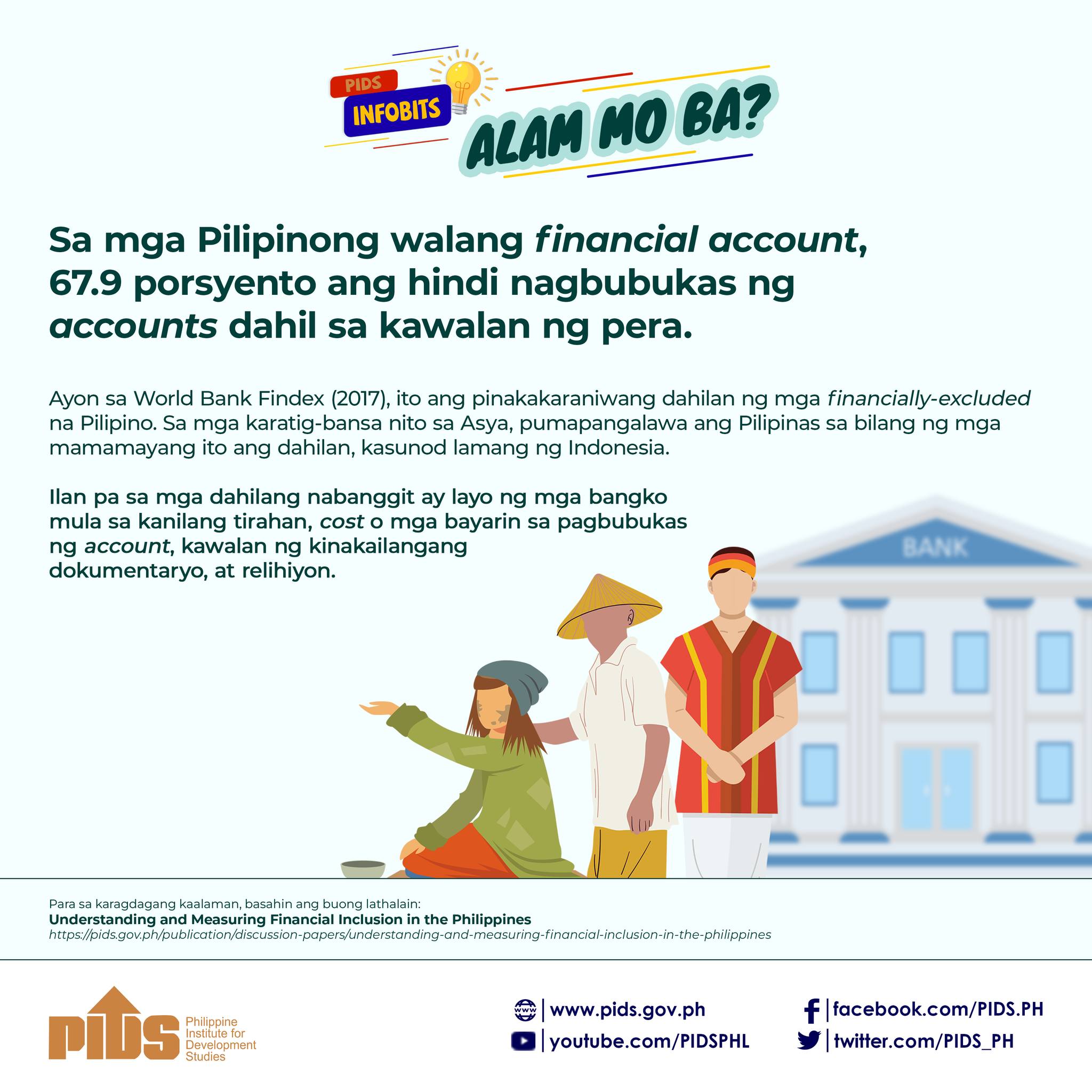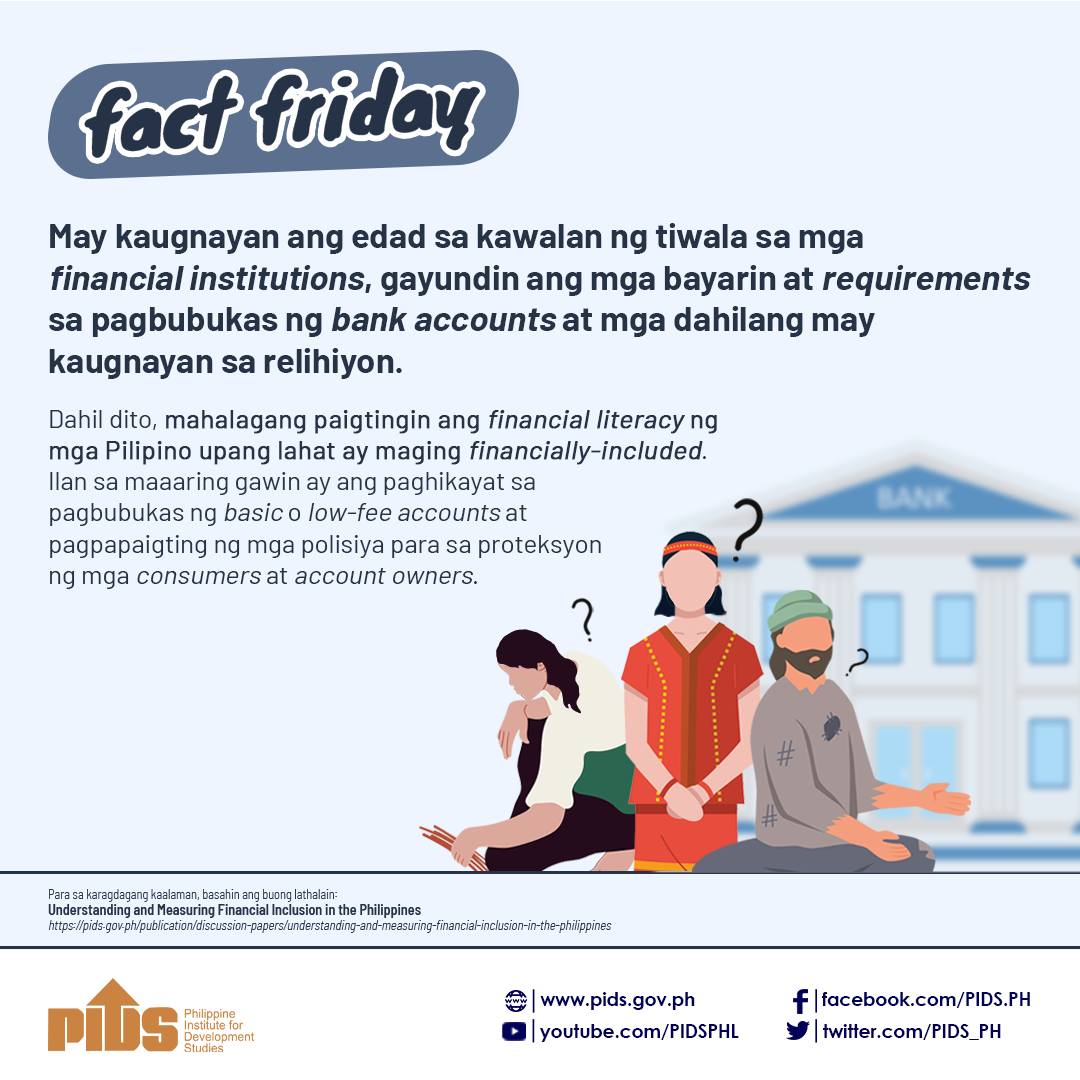This paper examines financial inclusion in the Philippines, benchmarking it against other developing Asian economies using the latest supply-side and demand-side data. It uses probit regressions on Philippine microdata from the World Bank’s 2021 Global Findex Database, providing a comparative analysis with the country’s regional peers. The study finds the Philippines leading in creating an enabling environment but shows mixed performance in financial outreach and uptake and lagging outcomes in account ownership and usage. Probit regressions reveal positive associations between financial inclusion and individual characteristics like education, income, and employment, and a nonlinear relationship with age. The study uncovers a smaller gender gap in formal account ownership and use and emerging disparities in financial technology access across education and income levels, particularly mobile money. Barriers such as high cost, distance, and lack of trust in financial institutions significantly hinder lower-income households, with Filipinos more affected by these barriers than their Association of Southeast Asian Nations counterparts.

